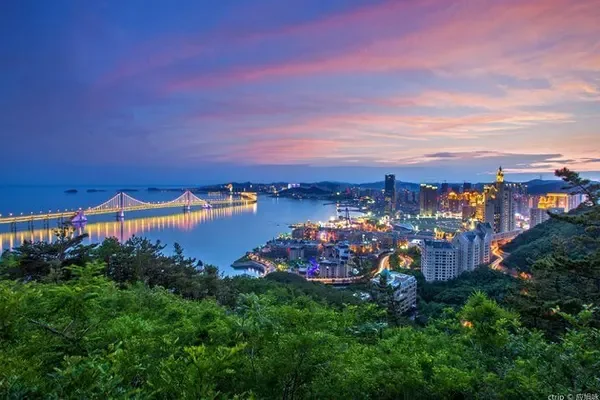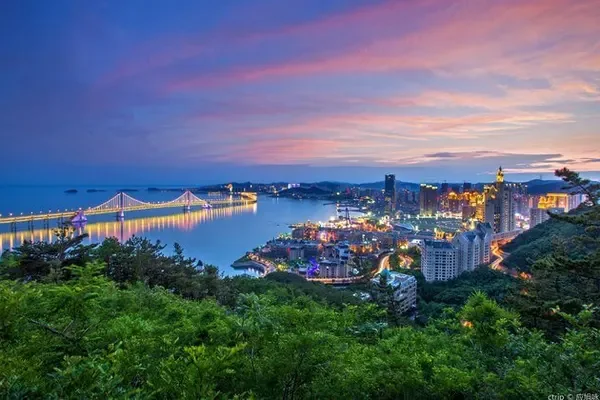
The Lancang River flows slowly, and the golden Buddha stands between the heaven and the earth. He gazes at the world and prays for blessings. The clear blue sky, pure clouds, and warm sunlight fall on this huge Buddha gold body. Every Tibetan passing by the Buddha will stop, face the Buddha, and put his hands together. All living beings live, and they embody the breath of "all living beings are good".

But for the Tibetans here, there is also an ancient and rare pagoda, which is the holy place-the ruins of the Ashoka Pagoda. According to legend, 2,200 years ago, after the third ruler of the Maurya King period in India, Ashoka, converted to Buddhism, he paid homage to the Buddha's relics in order to commemorate the 200th anniversary of Buddha Sakyamuni's Nirvana. 84,000 pagodas have been built around the world.

China occupies 19, and this pagoda is one of them. It is located in Nangqian Xiangda Town, Yushu, Qinghai. It is called Nangqian Ashoka Pagoda by the locals.

Every morning, before the sun rises in the east, devout Tibetans are already turning prayers along the stupa, and the hand-operated prayer wheel is at the fingertips day after day, year after year, endlessly. Their pace has never been hurried, and they keep turning the scriptures every day, which has become an indispensable and important part of life.

Under the glittering golden pagoda, there is a relic of Buddha Sakyamuni, which is the underground palace of Buddha relic. It has a history of 2356 years, but it has never been opened so far. However, the stone tablet unearthed here that records the records of the pagoda confirms that the site of the pagoda in Nangqian is the Ashoka Pagoda.

The pagoda is five stories high, and the small pagodas from the upper floor to the lower floor are composed of five different architectural structures, which have witnessed the evolution of different pagoda forms in different eras.

Among them, the most striking thing is that the style of this pagoda is biased towards Nepalese style. The local monks said that when the pagoda was rebuilt, Nepalese craftsmen were invited. Although the temple has been damaged several times, the storage in the pagoda has not suffered any loss. The belief of the Tibetan people is endless.

The first floor of the pagoda is the ruins of the old pagoda of Sakyamuni Buddha's bone relics built during the Ashoka period, which is easy to visit and is surrounded by tempered glass curtain walls. Although the indoor light is insufficient, it still shocks the soul.

Around the ruins of the old pagoda, there are about 500 small pagodas, 5 million Buddha statues, 160,000 holy stones engraved with Tripitaka scriptures, and countless Mani stones surrounding the underground palace. . And at a glance, it is also extremely spectacular.

The butter lamps that have lasted for thousands of years flickered gently, and the simple and kind Tibetans cared for this holy place with pious beliefs.

In the other pagoda floors of the pagoda, there are also precious cultural relics such as golden statues of patriarchs, thangkas and ancient scriptures. Under normal circumstances, these pagodas are not open. Tourists can only turn around this Ashoka pagoda like Tibetans. At 90:00 every morning, there will be more and more people, regardless of men, women and children. Their figures shuttle under the blue sky and white clouds, forming a special and moving scenery.

But fortunately, I climbed the stupa. For tourists, climbing the stupa is a special privilege. You can get close to every small stupa on the stupa, and the big golden body of Sakyamuni is also The closer ones appear in front of you, and when you go up the stairs, you can have a panoramic view of the surrounding mountains and forests.

But the locals are reluctant to climb the pagoda. In their eyes, climbing the pagoda means stepping on the Buddha, which is disrespectful and very taboo. Although tourists are allowed to climb the pagoda, people still hope that the pagoda will have a peaceful environment.

It is said that this pagoda is an important pagoda for improving local geomantic omen. When Tubo Zanpu Songtsen Gampo built temples of various sizes to improve geomantic omen in the snowy area, he once built a temple next to this pagoda. It is now the Qamdo Temple in Tibet. predecessor. But now the pagoda is an important part of Caijiao Temple, a famous local temple.


Near the pagoda, there is also a very large prayer flag. When the winding prayer flag is swaying in the wind, it will show "chacha" from time to time. It is usually engraved with scriptures or Buddha statues. This is what Tibetans will release after praying. it's here.

At the same time, this is also the way for them to turn around. For the Yushu Tibetans living in Nangqian, every plant, tree, mountain, and rock here are sacred, and they live in harmony with each other. Some people say that this is a holy place where humans and gods coexist.


